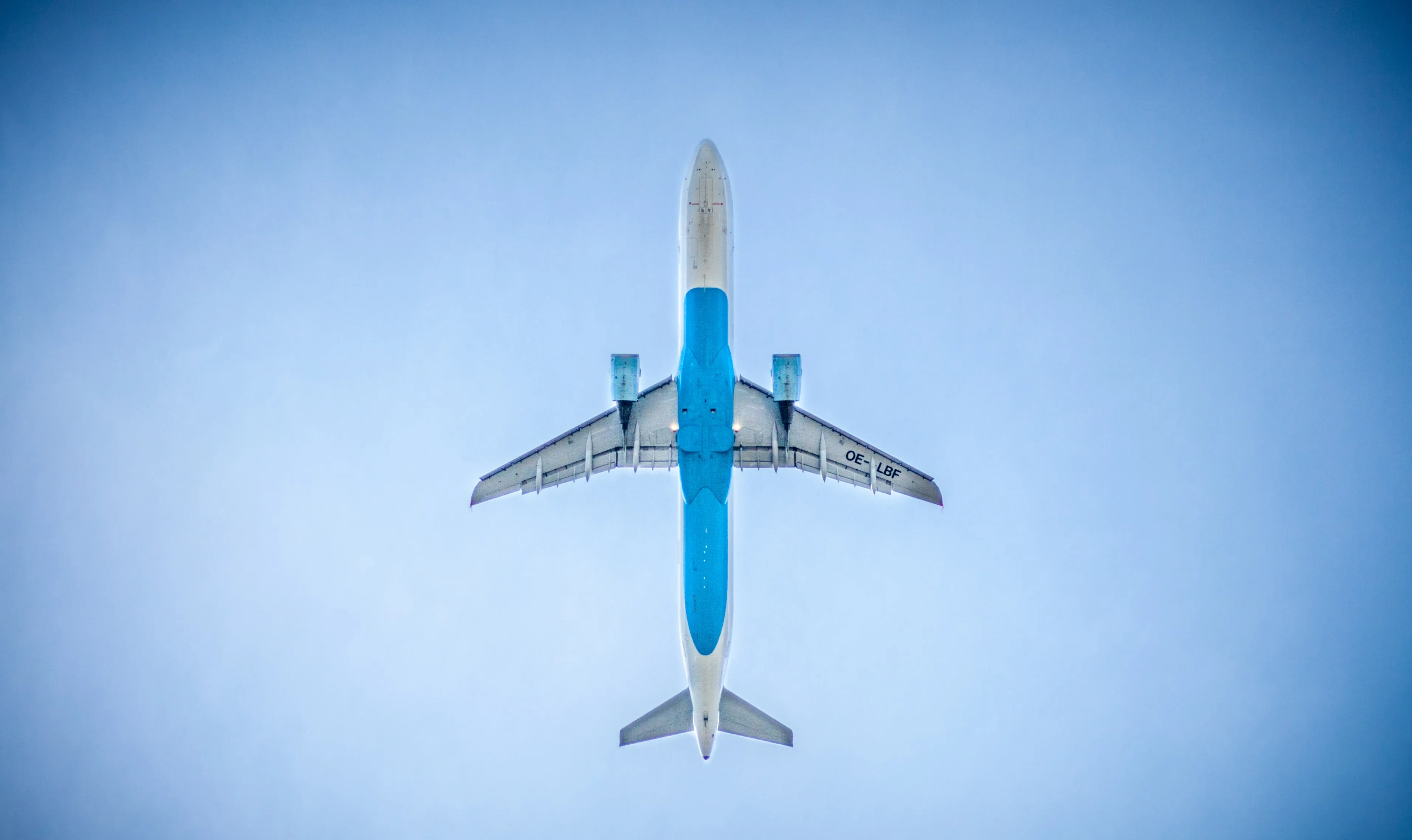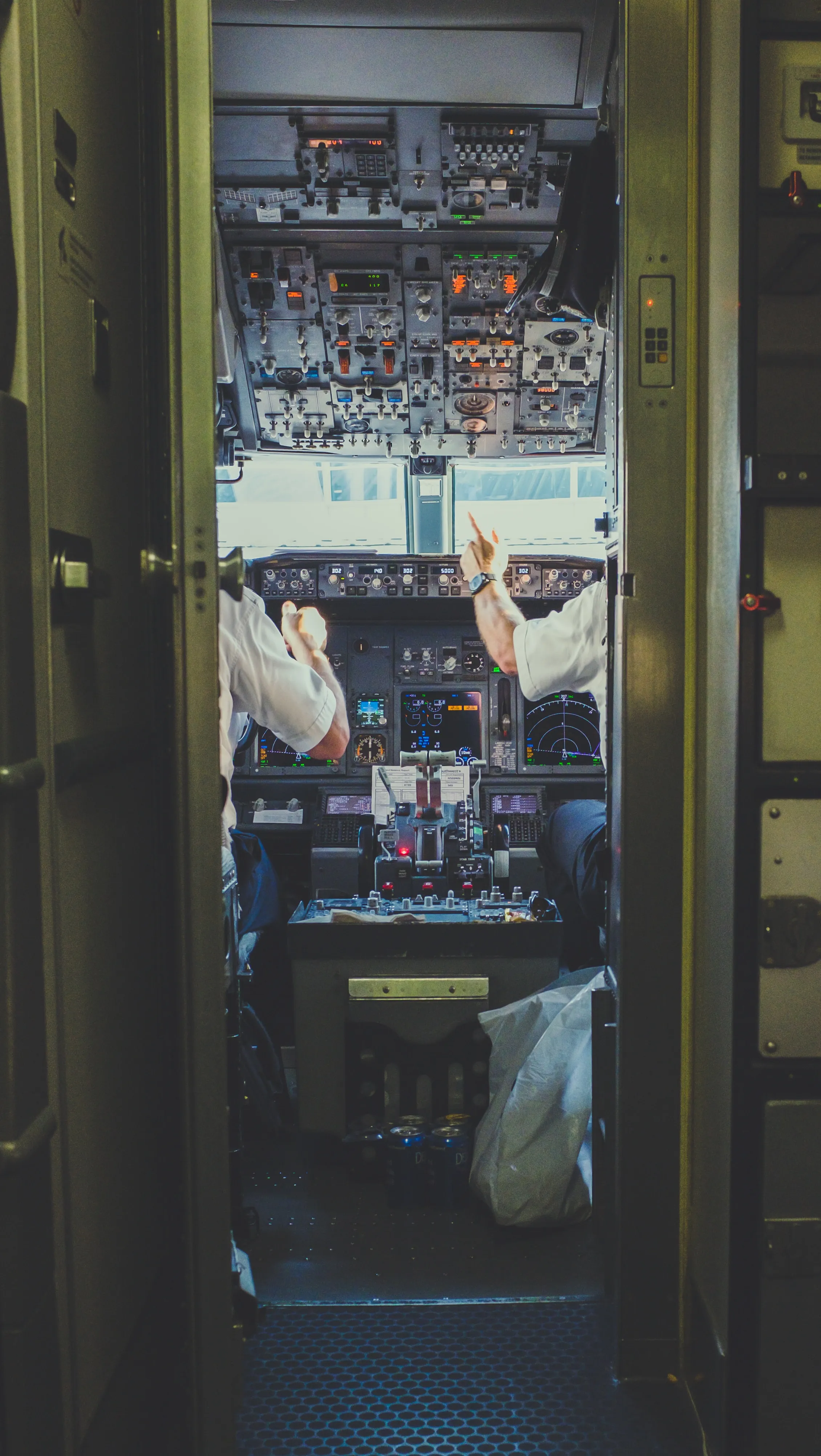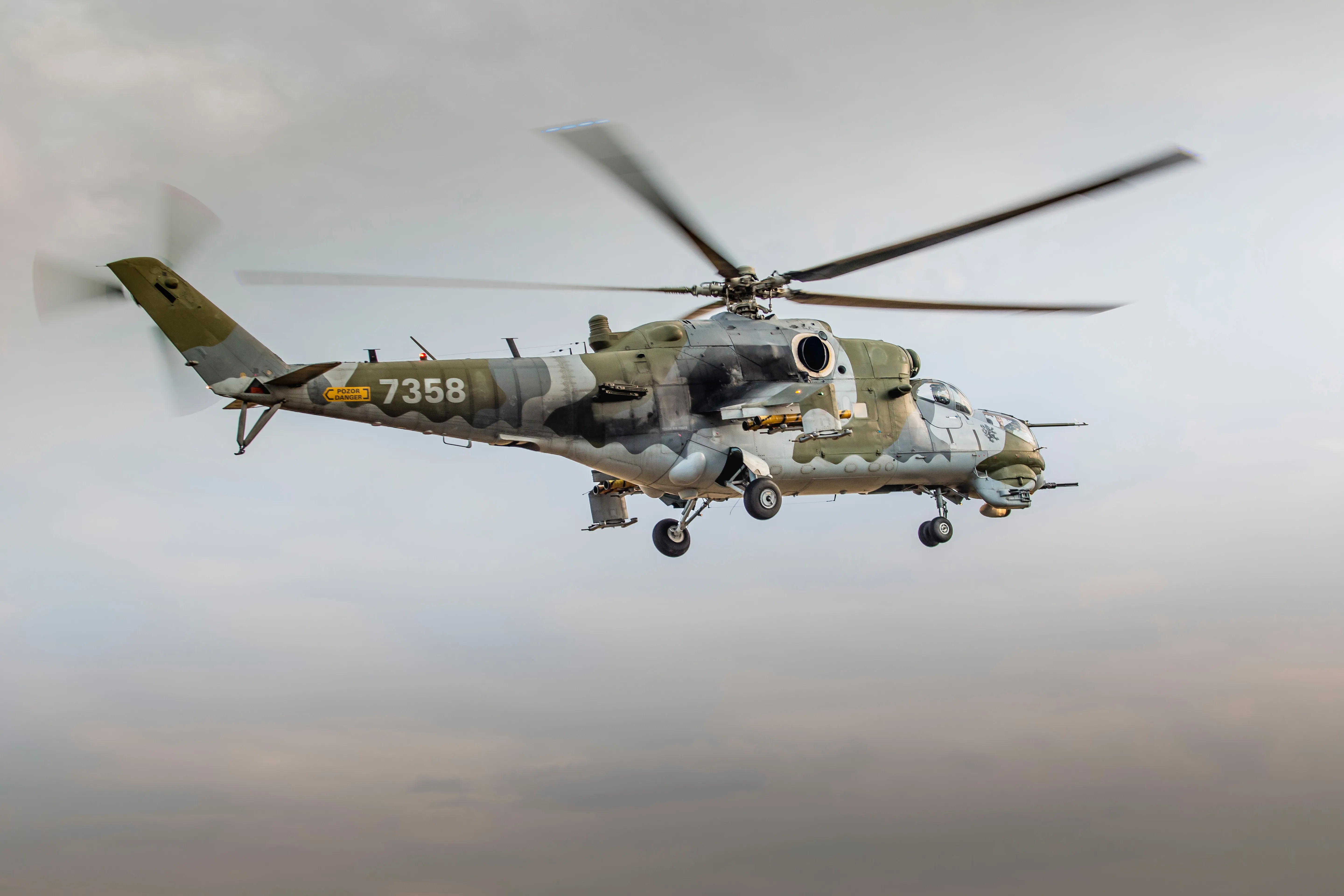
Introduction
Hydraulics is a crucial component in the aviation industry. From controlling the landing gear to movement of flaps and slats, hydraulic systems are used to provide power to various aircraft systems in order to ensure safe and smooth flight operations. It is essential that these systems are properly maintained and repaired for reliability, safety, and longevity.
Brief Overview of Hydraulics in Aviation Maintenance
Hydraulic systems have been used in aircraft for decades. They provide an efficient means of transmitting power from one location to another using fluids under pressure.
The fluid used is typically an oil-based hydraulic fluid that has a low viscosity but high compressibility. Hydraulic systems are also known for their ability to amplify force through the use of pistons and cylinders which can exert much larger forces than would be possible with mechanical systems alone.
In aviation maintenance, hydraulics are primarily utilized for actuation purposes such as retracting or extending landing gear, opening or closing doors, flaps or brakes as well as steering system controls. Properly functioning hydraulic systems help maintain safe operation of all the listed components.
Importance of Proper Maintenance and Repair
Maintenance and repair of hydraulic systems ensures they function efficiently throughout their lifetime. Regular inspections can reveal problems before they escalate into more extensive issues that can compromise safety and increase cost due to downtime from repairs.
In addition, proper maintenance helps prevent corrosion within the system which could lead to leaks or complete system failure during flight operations. Contamination such as water entering into the system could cause damage by rusting internal parts leading to malfunctioning equipment when needed most.
If not done properly by qualified technicians who follow manufacturer's recommendations or guidelines on usage limits, improper maintenance can result in faulty components being installed compromising safe operation within flight conditions causing potential danger to passengers and crew. Furthermore, regular maintenance and repair of hydraulic systems can greatly extend the life of the system, which can save cost in the long run as well as ensure safe operation.

Understanding Hydraulics in Aviation Maintenance
Definition and Function of Hydraulics
Hydraulics is a type of system that uses fluid to transfer force from one point to another. The term "hydraulic" comes from the Greek word "hydro," meaning water.
In aviation maintenance, hydraulics are used to power various components such as landing gear, brakes, and flight control surfaces. These systems work by using pumps to pressurize hydraulic fluid, which then moves through hoses and valves to create motion in the desired component.
The function of hydraulics in aviation maintenance is crucial for the safety of aircraft operations. For instance, landing gear must be deployed quickly and smoothly for every takeoff and landing.
Otherwise, there can be a risk of damage or accidents occurring upon touchdown or liftoff. Therefore, well-functioning hydraulic systems are essential to ensure the smooth operation of an aircraft.
Types of Hydraulic Systems Used in Aviation
There are two main types of hydraulic systems used in aviation: open center systems and closed center systems. Open center systems operate by allowing fluid from a pump to flow continuously through the system when no work is being done. When work needs to be done, such as when a pilot wants to lower landing gear, valves close off areas of the system to pressurize fluid into certain areas.
Closed center systems operate by keeping fluids under pressure until action needs to be taken. Fluids will only move when a valve opens up an area for it flows into; this allows more precise control over how much energy is put into different parts at different times.
Components of a Hydraulic System
Hydraulic systems used in aviation maintenance commonly consist of several components: pumps, motors/actuators, cylinders, valves/solenoids (control), filters (cleaning), hoses/tubing (transportation), and fittings (connections). The pump is responsible for pressurizing hydraulic fluid and moving it through the system. There are two main types of pumps used in hydraulics: positive displacement pumps and dynamic pumps.
Actuators, motors, cylinders handle the movement of components, such as landing gear or flaps. Valves and solenoids control the flow of fluid in the system.
Filters are used to clean fluids before they enter key components like cylinders, pistons or valves. Hoses and tubing transport fluids between different parts of the hydraulic system while fittings connect hoses together.
Hydraulics play a vital role in aviation maintenance by powering various components that ensure aircraft safety during takeoff, flight, and landing. Hydraulic systems can be either open center or closed center systems.
Components of a hydraulic system include pumps, motors/actuators, cylinders, valves/solenoids (control), filters (cleaning), hoses/tubing (transportation) & fittings (connections). Proper understanding of how these systems function is essential for their proper maintenance and repair in aviation maintenance.

Best Practices for Maintenance and Repair
For aircraft hydraulic systems, proper maintenance and repair are essential to ensure the safety of passengers and crew. Regular inspections, pressure testing procedures, fluid management, component maintenance, and troubleshooting techniques are all necessary parts of best practices for maintaining hydraulic systems in aviation.
Inspection and Testing
Regular inspection schedules are key to maintaining hydraulics in aviation. A typical schedule includes daily visual checks of the system for leaks or damage during pre-flight inspections. Routine checkups every 50-100 flight hours include checking fluid levels, ensuring filters are clean, and verifying that hoses/fittings have no cracks or corrosion.
Additionally, hydraulic systems should undergo more thorough inspections every 500-1000 hours to assess the system's overall health. Pressure testing is a critical part of proper maintenance as it detects any leaks before they become hazardous in-flight situations.
The hydraulic system must be depressurized before conducting any pressure tests by shutting off the pump motor or disconnecting the battery power source. The test is carried out by pressurizing the system with a specified amount of pressure (usually specified by aircraft manufacturers) for a specific period while monitoring for any drop in pressure or loss over time.
Fluid Management
The correct type and quality of hydraulic fluids are essential components for optimal performance in aviation maintenance practices. The commonly used aircraft hydraulic fluid types include MIL-H-5606 mineral-based fluid (red), MIL-H-83282 synthetic hydrocarbon-based fluid (purple), ISO VG 15 mineral oil-based (yellow), ISO VG 46 mineral oil-based (blue), Skydrol phosphate ester-based fluids (amber).
It's important to use only recommended types because using alternative fluids may lead to contamination or damage to components within the system. Proper handling techniques of hydraulic fluids play an important role in their longevity and performance effectiveness.
The most critical aspect of fluid maintenance is ensuring that the fluid is clean and free of contaminants, including dust and debris. Frequent monitoring of fluid levels in the reservoir helps detect any issues before they become critical.
Component Maintenance
The hydraulic system consists of several parts, including pumps, motors, cylinders, valves, filters, hoses and fittings. Component maintenance involves inspecting each part for wear or damage and replacing them when necessary. When replacing faulty parts within the system with new ones or re-installing them after repair or inspection procedures, proper torque settings should be applied to fasteners to avoid over-tightening or under-tightening.
Troubleshooting Techniques
Troubleshooting hydraulic systems requires an understanding of how each component works together. If a component fails during operation, it's essential to determine the root cause accurately. Common troubleshooting techniques include conducting diagnostic tests on specific components within the system to isolate potential issues by identifying error codes generated by systems with onboard monitoring tools such as Engine Indicating and Crew Alerting Systems (EICAS) or Centralized Fault Display Systems (CFDS).
The use of hand-held diagnostic tools like digital multimeters can diagnose electrical faults in components like solenoids and motors. Best practices for maintaining hydraulics in aviation involve regular inspections and testing schedules that include pressure testing procedures; appropriate fluid management techniques which involve using only recommended fluids while properly handling them; component maintenance that includes replacing faulty parts when necessary; troubleshooting techniques which consider every part working altogether—all these efforts play a crucial role in ensuring safe aircraft operation for passengers' safety during flights.

Common Problems with Hydraulic Systems in Aviation Maintenance
Leaks: Diagnosing and Resolving the Problem
Hydraulic leaks can be a serious problem for any aircraft. Not only can they lead to reduced system performance, contamination of hydraulic fluid, and increased maintenance costs, but they also pose a safety risk to flight crew and passengers. As such, it is important for aviation maintenance professionals to be able to identify the source of a leak quickly and resolve it as soon as possible.
The first step in diagnosing a hydraulic leak is to visually inspect the system. Look for signs of fluid around fittings, hoses, and other components.
If there is visible fluid but its source cannot be identified by this method, consider using UV dye or fluorescent powder in the hydraulic fluid to help pinpoint the location. Once the source has been identified, determine whether repair or replacement of the component is necessary.
Contamination: Prevention and Mitigation Strategies
Contamination of hydraulic fluid can cause significant damage to an aircraft's hydraulic system if left unchecked. It can lead to increased wear on components due to abrasive particles, corrosion due to water or other chemicals in the fluid, and reduced system efficiency due to restricted flow caused by clogged filters or lines. To prevent contamination from occurring in the first place, always use clean fluids when filling or topping off a hydraulic system.
Additionally, maintain proper filtration systems at all times; check filters regularly and replace them as needed. In cases where contamination has already occurred within a system, remedial action must be taken immediately through proper cleaning techniques such as flushing or filtering.
Corrosion: Causes and Symptoms
Corrosion can occur within an aircraft's hydraulic system due to various factors such as exposure to moisture (especially salt water), chemical reactions between hydraulic fluids and materials used in component construction (such as aluminum), and poor quality hydraulic fluids. Symptoms of corrosion may include increased wear on components, discoloration or pitting on metal surfaces, and reduced system efficiency due to restricted flow caused by clogged lines.
To prevent corrosion, always use high-quality hydraulic fluids that are compatible with the materials used in component construction. Additionally, maintain a regular inspection schedule for all components and replace any that show signs of corrosion immediately.
Minimizing Risk through Proper Maintenance
To minimize the risk of hydraulic problems in aviation maintenance, it is imperative to adhere to proper maintenance practices at all times. This includes conducting regular inspections and testing of hydraulic systems, using high-quality fluids that are compatible with component materials, maintaining proper filtration systems, and addressing any potential issues as soon as they arise. By doing so, you can ensure the safety and operational integrity of your aircraft's hydraulic system for years to come.
Safety Considerations for Working with Hydraulics in Aviation Maintenance
Personal Protective Equipment (PPE)
When working on hydraulic systems, it is essential to wear the appropriate personal protective equipment (PPE). PPE helps to protect the technician from potential hazards that may arise during maintenance and repair of hydraulic systems.
Some common PPE items recommended for working with hydraulics are safety goggles or face shields, gloves, and protective clothing. Safety goggles or face shields protect the eyes from any debris that may shoot out of the hydraulic system or from the fluid when pressurized.
Gloves are used to protect hands from cuts and bruises while handling sharp components such as hoses and fittings. Protective clothing is necessary when working with hydraulic systems in case of any spills that can cause skin irritation or chemical burns.
Wearing proper PPE can minimize accidents while maintaining and repairing hydraulic systems. It's essential to ensure that all technicians working on hydraulics wear adequate PPE at all times - no exceptions.
Lockout/Tagout Procedures
Lockout/tagout procedures are critical for ensuring that anyone working on a hydraulic system is safe from any unexpected movement or pressure release within the system. Lockout/tagout procedures ensure that no one operates a machine during maintenance, servicing, adjusting, or repair work. Before starting work on a hydraulic system, technicians must follow lockout/tag-out procedures by shutting off power sources to pumps or valves and putting a lock on them so that they cannot be turned back on during maintenance.
Tags should also be placed on all visible outlets of the system warning others not to operate them under any circumstances. It's essential to train technicians about lockout/tag-out procedures before allowing them to work with hydraulics because it's an effective way of ensuring their safety while handling such dangerous machines.
, personal protective equipment and lockout/tag-out procedures are critical safety measures that protect technicians from avoidable accidents in the workplace. Ensuring that technicians follow these safety measures helps prevent injury and damage to hydraulic systems.

The Importance of Proper Hydraulics Maintenance and Repair in Aviation Maintenance
Why Proper Maintenance and Repair of Hydraulic Systems is Essential
Proper maintenance and repair of hydraulic systems in aviation maintenance is crucial to ensure the safety and reliability of aircraft. Neglecting hydraulic system maintenance or repair can result in catastrophic consequences, such as loss of control, engine failure, or even crashes.
Hydraulics are widely used in modern aircraft for a range of functions, including landing gear retraction/extension, flight control surfaces movement, and braking systems. These critical functions require reliable hydraulic systems that are properly maintained.
Benefits of Regular Maintenance and Repair
Regular maintenance and repair practices help to prevent failures before they occur. This can save time, money, and resources by avoiding unexpected downtime or costly repairs.
Regular inspections can identify potential issues early on so that they can be addressed before becoming major problems. Proper fluid management practices such as using the correct fluid type and quality help prevent failures due to contamination or other issues related to poor fluid handling techniques.
Safety Considerations for Working with Hydraulics
Safety should be a top priority when working on hydraulic systems in aviation maintenance. Personal Protective Equipment (PPE) such as gloves, goggles, and respirators should be worn when handling fluids or working with hydraulic components. Lockout/Tagout procedures should also be followed to ensure that hydraulic systems are de-energized during maintenance or repair activities.
Conclusion: A Safe Future for Aviation Maintenance
Proper maintenance and repair practices are essential for ensuring the safety and reliability of aircraft hydraulic systems. The benefits of regular inspections/testing procedures as well as best practices for component maintenance will go a long way towards preventing potential catastrophic consequences from occurring due to system failure caused by neglecting proper upkeep measures. By following these guidelines along with wearing appropriate PPE and following lockout/tagout procedures, we can expect a safer future for aviation maintenance.
